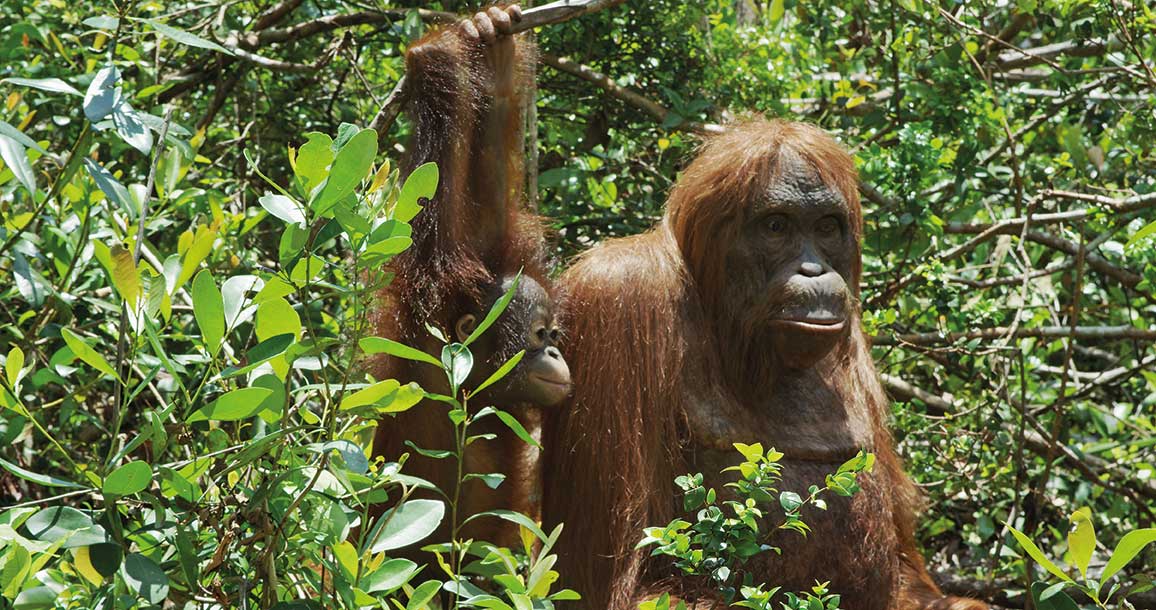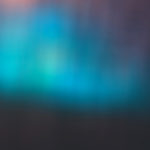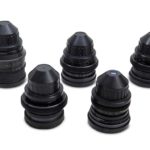
Secret Cinema
Posted on Jul 3, 2017 by Julian Mitchell
Spy in the Wild is the latest version of the ‘spy cam’ series of wildlife programmes that started almost 20 years ago
Spy In The Wild is the acceptable face of voyeurism for the nation’s couch potatoes but perhaps the nation doesn’t realise that this animal version of The Truman Show has been beamed in to living rooms now for almost 20 years since Spy in the Den allowed us to witness, close and personal, the family drama of being an African lion.
Back then the spy, or to be more succinct, boulder-cam was the means of being dropped in to the heart of the action. There weren’t many shots of it wheeling to and fro but who really wants to see that; you want to see what it sees. Now, with Spy in the Wild, the spies have become as important as the behaviour they’ve been designed to record. Now they elicit behaviour rather than just recording it. All moral questions arising from this apart, it makes for great television!
Boulder-cam was invented out of desperation. When the Spy in the Den team started to film the lions they found that they spent most of their time lurking in the den and bushes so they could hear the cubs, but all the interesting behaviour was happening off-camera. On their next trip they had built the boulder-cam and after an initial trepidatious inspection from a lioness, the pride seemed to leave it alone. They got the shots they wanted and a whole new world of natural history shooting was unleashed.
Spies Like Us
 Producer Rob Pilley gets Spy Baby Hippo into the optimum shooting position
Producer Rob Pilley gets Spy Baby Hippo into the optimum shooting position
The spy genre has been a fantastic success. John Downer Productions, who came up with the original idea has gone on to spy on elephants, bears and penguins all using a stationery POV remote camera. It was when they took on the polar bears that there was an evolutionary step forward. Philip Dalton, a producer on Spy in the Wild recounts what happened next; “We had the blizzard-cam which was on skies, that was a fantastic device and it had a deployable snowball on the back so we could scoot that across at great speed in the direction of a polar bear in the distance then deploy these little snowball remotes. Then we had a floating iceberg camera which could go in between the ice floes and follow the bears while they were swimming and it had an underwater camera.”
But it was a new penguin film that was a real turning point for the spy team. They wanted to get into the heart of a colony but unfortunately for the production team, penguin colonies are very dense and hard to penetrate. It was then they came up with the idea of a walking, robotic penguin that would take them in to the colonies’ centres. They teamed up with a robotic team in America and they made something based on a humanoid robot that was bipedal but modified to be a penguin. “We got some great model makers in the UK to make skin to go around it. It was a bit of a gamble and we didn’t think it would be entirely successful but it worked really well. We devised it so if it fell over it would get up again; even in high winds it could weight shift and lean in to the wind – and it was accepted by the rockhoppers’.”
The penguin cam did go into the heart of the colony but perhaps it was its Japanese programmer who opened up a real advance by coding an emulation of the penguin’s behaviour so it could, amongst other behaviour, mimic their ritualistic call – which is more of a greeting – so further assimilating them into the colony. “That was an important part of it getting accepted by the penguins,” says Philip. “There was a wonderful scene where a male penguin starts to flirt with the robot, starting courtship behaviour. This was extraordinary as here we were, a robot communicating with a real penguin.“
The team were unstoppable after that breakthrough, creating all sorts of fishy robots, like a squid-cam for Spy in the Pod to capture the lives of Dolphins. That whole series took the filmmakers to beginning of Spy in the Wild.
Band Of Spies

 A Spy as a work-in-progress at the John Nolan Studio in London
A Spy as a work-in-progress at the John Nolan Studio in London
The concept was proven and so the creatures began to be made. 34 robots were to be created in all, including different types: Spy Orangutan, Spy Croc Hatchling, Spy Meerkat, Spy Egret, Spy Tortoise, Spy Prairie Dog, Spy Macaw, Spy Sloth, Spy Cobra, Spy Bushbaby, Spy Squirrel, Spy Adelie, and Spy Baby Hippo.
Over the course of three years the different robots were put together and then their stories devised with the help of scientists and researchers. The meerkat was the first robot out of the blocks and arrived in the Kalahari with some great advice to lessen the waiting time for assimilation in to the group. “We learned how our robot had to move and how it should smell,” explains Philip. “Then we had the Spy Egret which was used with the elephants. We budgeted for worst case scenario which meant them all getting destroyed and the cost of replacements, but very few were destroyed over the series, which shows how many were accepted by their target audience.”
As the team were able to produce more effective and now lifelike robots, the camera technology was also getting better and giving producers even more ability to film new behaviour. “The original boulder-cam was beautifully built and engineered by Geoff Bell. We’ve been working with Geoff for many years, he is an engineer and into model helicopter flying. We used to put our cameras on his helicopters and he was one of the first people in the world who put cine cameras on model helicopters and fly them in to extraordinary places and get birdlike POV shots.
 Spy Arctic wolf makes a friend
Spy Arctic wolf makes a friend
“He engineered boulder-cam, it was a pan and tilt and roll system based on very basic servos. It worked very well and was fully manual, it had a radio controller but you had to correct for the roll manually and do all the tilting. For this series we had much more choice through new technology which even allowed us to bring back the dung-cam. The new one had gyros, brushless motors, a very sophisticated video sender so you can get an HD signal streamed back to you – it also records UHD resolution to an on-board recorder. It uses much of the technology found in the premium quality drones really, like a 3-axis self-stabilising gimbal for really nice steady shots and a whole multitude of little camera devices that we could deploy from the main mothership of the dung-cam! We had these rolling dung balls that could be released remotely. The dung-cam had an amazing range and could be line of sight for several miles if needed. It was also built to be elephant proof.
“Probably one of the most sophisticated spy creatures we had was the crocodile, made by the University of Lausanne. They are very hi-tech roboticists and are able to track every single bone in a creature to be able to mimic its movement. They track that movement through 3D X-rays and built the body from that data. They built a whole new skeleton out of carbon fibre and aluminium and have state of the art servos in there like a flight control system with algorithms that mimic the gait of a croc. That was an amazing thing to work with and demanded lots of computing power – the scientists needed to be in the field to operate it because it was so complicated. The end result was fantastic.”
Other highlights from the creature cast included the Spy Orangutan, made by the John Nolan Studio in London. John has spent most of his life making animatronics and is one of the best in the industry. “It was equally complicated but probably didn’t really need quite so much technology, it was more about the animatronics so getting little motors in there and not so much programming. It was more direct control through several transmitters but he created a lifelike movement in the face. We wanted something that would engage the wild orangutans and mimic every muscular movement in the face, he did a great job on that.”
Practical creatures
 It was vital that Spy Orangutan was lifelike enough to engage its wild counterparts.
It was vital that Spy Orangutan was lifelike enough to engage its wild counterparts.
Anything electrical with powered motors and cameras will have a limited battery life but Spy in the Wild had a trick up their sleeves which was totally consistent with natural history behaviour, a sleep switch. “It depends on how many movements the creature has to how long they can keep going. The smaller ones have batteries in so they can operate for several hours but if we can get about two hours of operation out of it then that is a practical length of time for use in the field.
“For us though the key is the ability to remotely shut down all the motors and then have it in standby mode. There is then just enough power to pick up the receivers to pick up the signal to turn on again. It can remain dormant for over 12 hours.
“The way it works when we take these creatures into the wild is to spend time understanding the lay of the land, what the animals are doing. Once we’ve worked out a good place where we think the animals are going to visit, sometimes it will be a den or a breeding area where the animals will be there for most of the day. So we wait for them to go off hunting or feeding and then surreptitiously deploy and move away to safe distance and wait for them to return, you’re then ready for those first reaction shots. When they’re in visual line of sight of our subject, we power it up. A lot of the magic is within that first encounter.”
The cameras used inside the creatures are off the shelf 4k small sensor minicams but are heavily stripped down and re-built to fit the creatures. The lens and camera head has to be small enough to go in to the eye of the spy. That was the most important thing, the camera had to be built into the eye. The heads of most of the creatures already have tilt and roll and with a head turn you get panning, but of course with the wide angle of the lens you had a large field of view anyway. They had several different camera systems that evolved through the three years so some cameras had their lenses in-built with others had separate lenses.
Of course the spy footage was just part of the brief. Because of the uncanny resemblance to their real counterparts it made total sense to film the spies filming the animals. So you had a parallel, more traditional, natural history shoot happening simultaneously. They used a RED Epic camera with long lens to get the two shot of the robot and real animal, but there were other remotes out there as well. Log-cams, stone-cams and egg-cams were dotted around and provided coverage to fill in any gaps in the story. “The spy series is always a challenge as traditionally you would go out with a long lens cameraman but for us it’s a multi-camera exercise. We’d have our RED Epic with sometimes the Canon CN20 lens but also other shorter telephoto lenses, that’s always running. Then the director would have some handheld cameras as well, in fact everyone in the field usually has a camera to hand. If one of the remote cameras goes down, there had to be someone there to cover the story.”
More like a soap
As with all modern natural history programming, there must be a narrative. With the spies you have the potential for magical behaviour never seen before. The narrative follows modern soap opera production values with multi-camera planning that keeps the story ticking, no lulls allowed. “If you include all the remotes you can have four cameras running for one piece of behaviour
so you can cut around things a bit
like a soap.”
The team worked out that they finished the shoots with 8000 hours of footage over the three years of production shooting for five one-hour shows. But this is the modern way, shooting ratios that were unheard of a few years ago. “The way we make films now is totally alien to the way they used to be made. There’s a huge amount of emphasis and money that goes in to the editing. We’ve had two editors full time on the project, cutting every day for well over a year. The producers and directors go through every second of that material, to digest it and then pass it on to the editors.
“Of course we were out in the field and we know what we’ve got roughly, but it’s not until we’re in the edit room that we can go through it in real time that the story starts taking form. Logging information at the time is very difficult to do with the number of cameras running. At the end of the day when we’re downloading we have our notes, so we have a rough log of what’s going on but it is very rough. Also sometimes it’s difficult to see the behaviour you’ve got, even though you’re filming it you don’t actually take in what’s happening in too much detail. You only see that details back in the edit room. It’s amazing when you see the detail you realise how amazing and extraordinary some of the shots are.”








